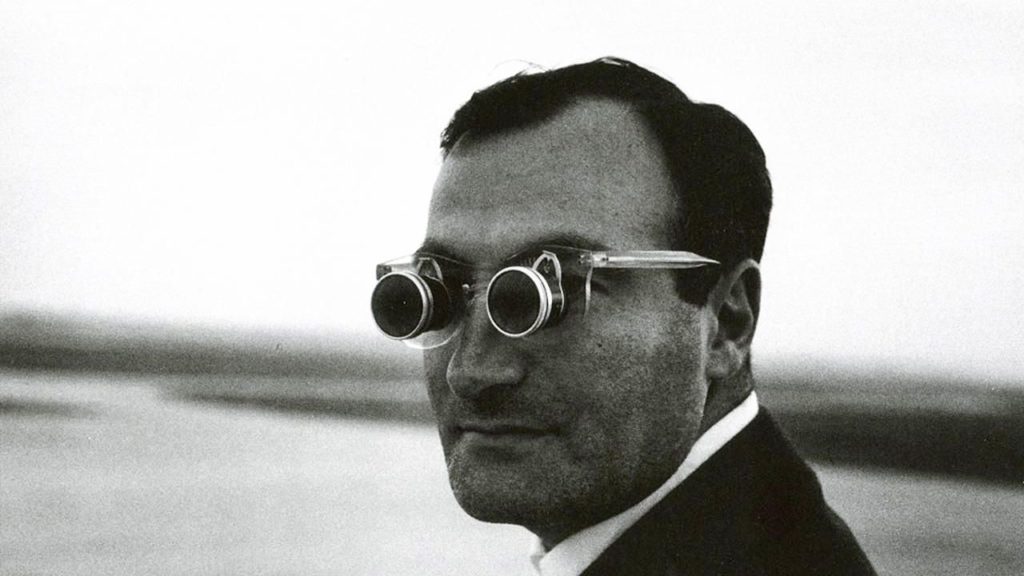“I read, some days past, that the man who ordered the erection of the almost infinite wall of China was that first Emperor, Shih Huang Ti, who also decreed that all books prior to him be burned.”– Jorge Luis Borges, The Wall & The Books

One can find no better example of cinema’s most cherished illusion than in Chris Marker’s landmark work La Jetée (1962). Marker’s filmography obsesses over humanity’s relationship with time and how that relationship can be articulated within film; La Jetée is no exception. La Jetée is most commonly analyzed and interpreted within this auteurist context, as a piece of the larger puzzle that is comprised of Marker’s works; indicative of singular interests, concerns and general preoccupations that are often compared with the writings of Henri Bergson and Jorge Luis Borges. However the technique that first rendered La Jetée as an avant-garde masterpiece has had ramifications that have only begun to be understood and appreciated.
The technique Marker employed in La Jetée that was so controversial was to strip down the illusion of motion in film to its absolute minimum, debunking an illusion that still is essential to the cinema even today. Marker’s approach, derived equally from the works of Dziga Vertov and Edweard Muybridge, was to tell a non-linear narrative in still images that, when juxtaposed with the preceding and proceeding images, created a suggestion of motion. Typically this is exactly what film is, 24 frames flying past in a second, each, individually, appearing to be still when the projection has stopped. Yet, within a projected sequence (and to the human eye), the images appear to be in motion. By allowing the images in La Jetée to represent a disjointed sequence Marker was able to get down to the very mechanics of how the mind of the spectator interprets both a sequence and the individual images that make up a sequence’s composition. In undoing this illusion, Marker has inadvertently opened the doors to a new kind of film scholarship.
One must first consider the history of film, the march of time, that has left so many films of the silent era either in serious stages of deterioration or alternatively in total decomposition. Then one must consider the history of various assemblages of Abel Gance’s Napoleon (1927). The controversy of the Francis Ford Coppola re-release of Napoleon versus Kevin Brownlow’s in the late seventies and how the publicity of the Coppola/Brownlow conflict sparked a renewed interest in silent film is crucial to understanding the originating motivations behind this “new” scholarship. Finally, one must consider the most radical effect that home video has had on spectatorship in terms of taking the responsibility of film programming out of the hands of distributors and academics (for the most part) and putting it in the hands of the consumer public.
All three of the aforementioned factors have provided a motivation for silent film reconstruction. Film historians, scholars and academics who once feared for the cinema’s silent heritage suddenly found that “big money” was interested in silent film restoration and reconstruction for monetary gain in both the theatrical and home video markets.
With regards to the nature of film reconstruction, La Jetée merely proved that the aesthetics necessitated by the process of reconstruction would be enough to create an approximation of a fully realized film from its few surviving parts. For instance, around the time La Jetée was garnering praise, Pera Attasheva began collaborating with Sergei Yutkevich, Naum Kleiman and composer Sergei Prokofiev on a reconstruction of her late husband’s film Bezhin Meadow (1937). The techniques that made La Jetée groundbreaking were now being used to bring Sergei Eisenstein’s most infamous work to audiences for the very first time.
Bezhin Meadow set a trend in terms of how reconstruction would be approached from a marketing standpoint. Erich von Stroheim’s Greed (1924) and Tod Browning’s London After Midnight (1927) would also find new life in the form of reconstruction (in 1999 and in 2002 respectively). However, the choice of films to undergo this treatment is predominantly dictated by the fact that audiences desire to see these films and will therefore pay money to do so. In this way the trap of film production is sprung again during reconstruction.
What’s more troubling than this trend is the rare occasion when a reconstruction is attempted without the proper scholarly research. The reconstructions of Greed and London After Midnight were undertaken and overseen by a reputable film scholar, Rick Schmidlin, so despite their shortcomings they remain the closest approximations of either film possible right now. On the other hand, Jess Franco’s reconstruction of Orson Welles’ unfinished Don Quixote that was completed in 1992 is best known amongst scholars for having neglected much of Welles’ original conntent. Franco’s version of Orson Welles’ Don Quixote becomes doubly troubling since Franco not only knew and worked with Welles but because he also had access to so much of Welles’ materials in addition to hours upon hours of footage from Welles’ unfinished personal masterpiece. Since Don Quixote, Greed, and London After Midnight are all marketed in the same manner, it becomes problematic for audiences to discriminate between the useful and the useless reconstructions.
At best a useful reconstruction such as Greed, London After Midnight and Bezhin Meadow gives the spectator a sense of the atmosphere of the narrative world as well as a sense of the filmmakers’ style and technique. These approximations, no matter the effort nor the skill that is invested in them, can never convey the rhythm of montage, the nuance of performance, nor any subtleties that are typically afforded by either contribution. These are half films, or ghost films in an almost literal sense. The eerie quality of most reconstructed films is born out of the lack of their traditional filmic motion (a byproduct anticipated and used to great effect in Marker’s La Jetée). One can, however, never detract from these reconstructions their usefulness from an anthropological standpoint nor from the perspective of auteurism.
